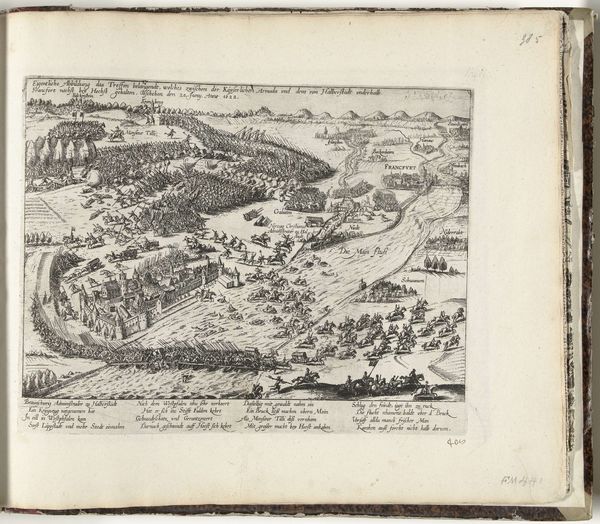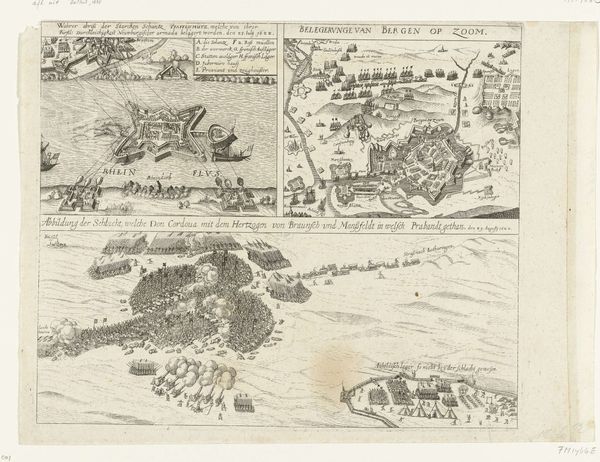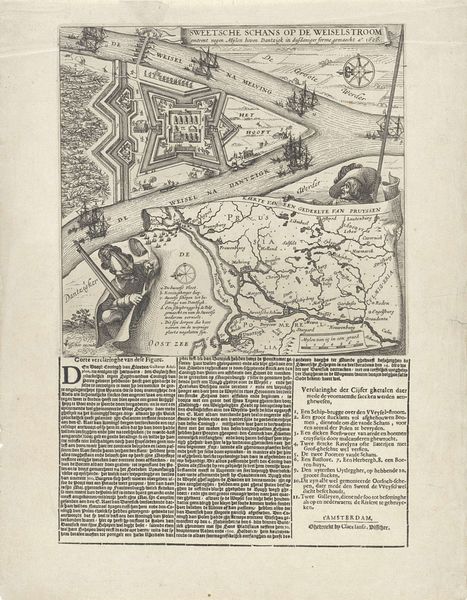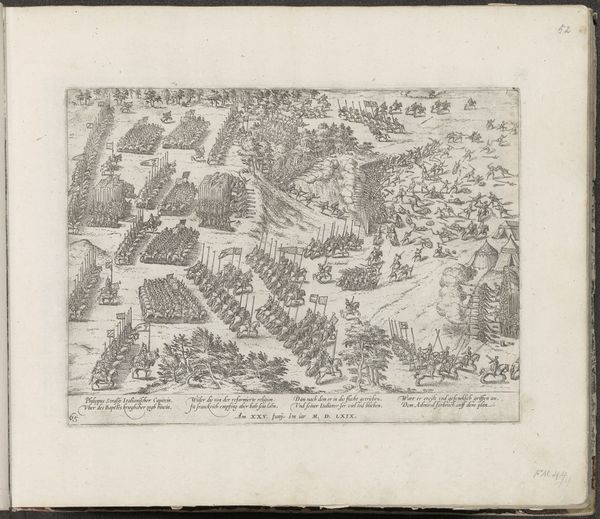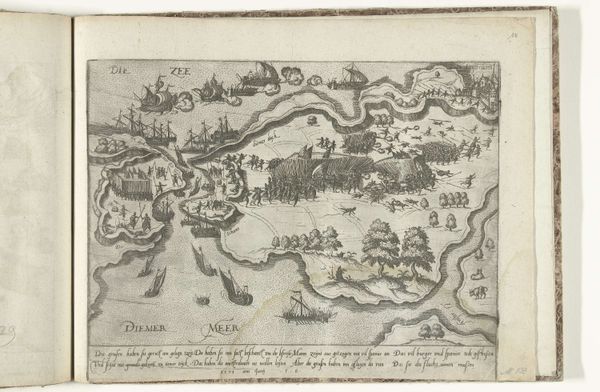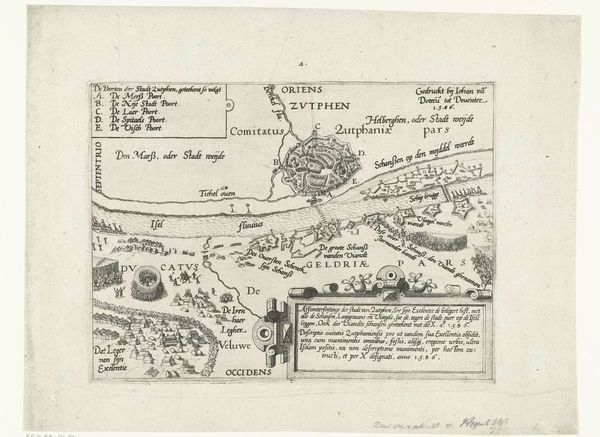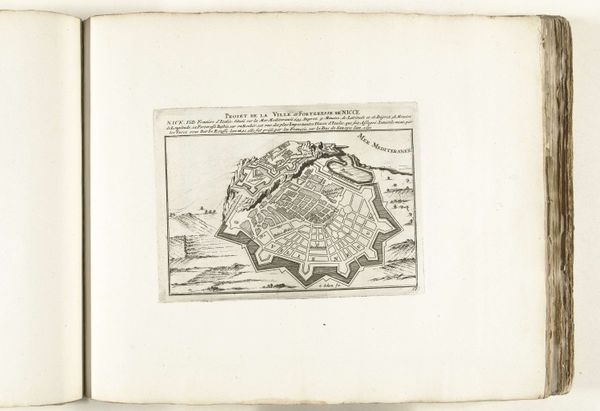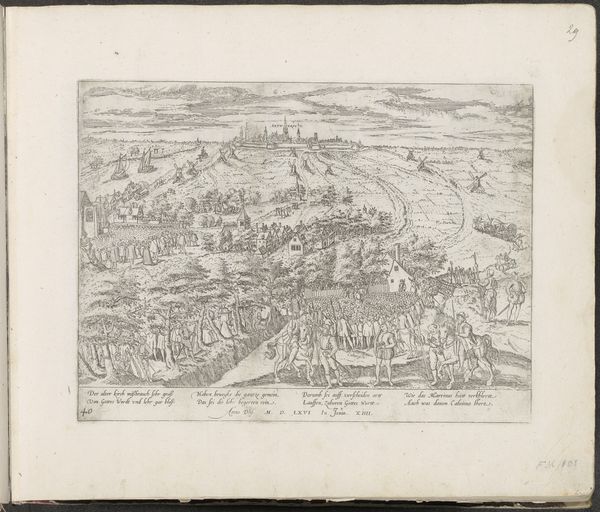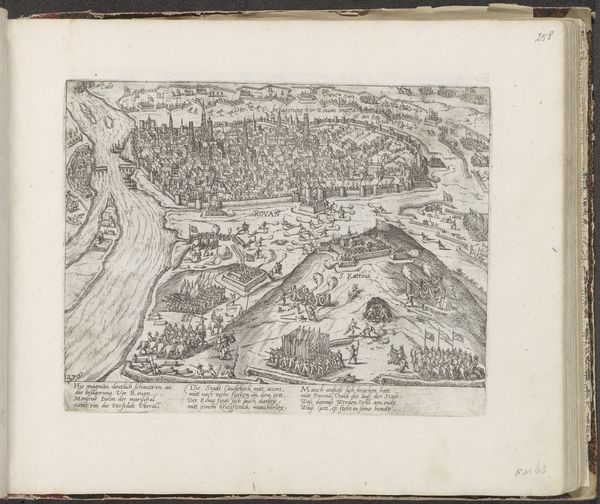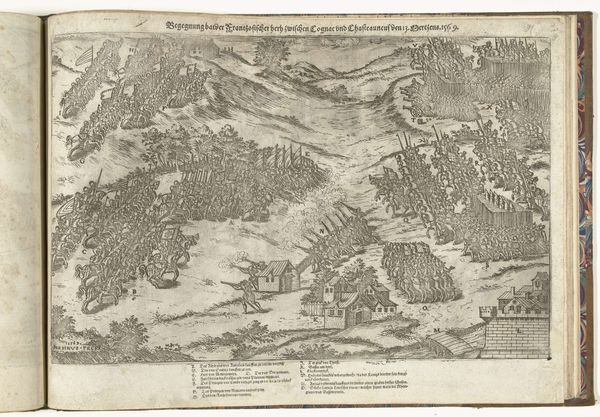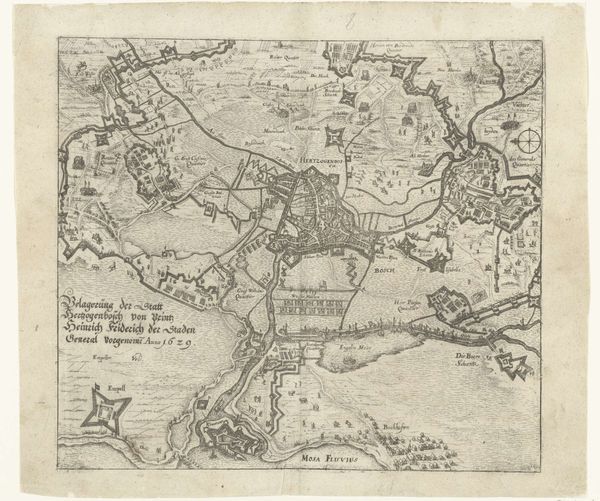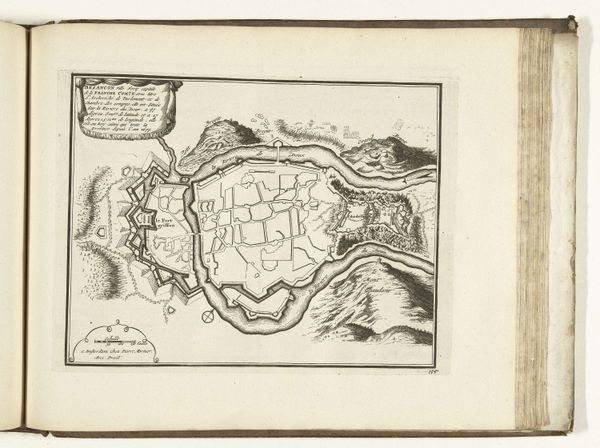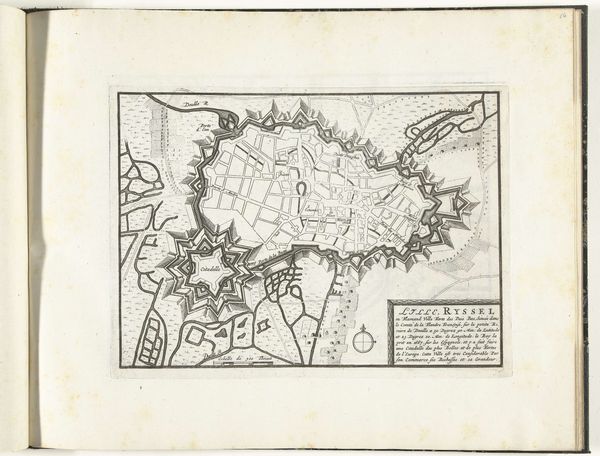
print, engraving
#
narrative-art
#
baroque
#
dutch-golden-age
# print
#
old engraving style
#
landscape
#
history-painting
#
engraving
Dimensions: height 188 mm, width 307 mm, height 377 mm, width 342 mm
Copyright: Rijks Museum: Open Domain
Curator: This print, held here at the Rijksmuseum, is entitled "Slag bij Heiligerlee, 1568", or "Battle of Heiligerlee, 1568". Though the print is anonymous, we can date its creation between 1632 and 1699. Editor: My initial reaction is the intensity. There is a frenzy of activity conveyed through a highly organized circular composition. The detail, despite its scale, is quite captivating. Curator: Indeed. And considering this engraving portrays the Battle of Heiligerlee, which holds enormous symbolic significance for the Netherlands as the opening salvo in the Eighty Years' War, one could suggest this aesthetic order imposed on the battle could be interpreted as an effort to reframe trauma into a more palatable visual for the burgeoning Dutch identity. The composition itself mimics battle tactics of encirclement used during that era, specifically highlighting Dutch successes. Editor: It’s interesting to consider that visual tension between meticulous detail and chaotic subject matter. Note the varying densities of lines, darker in the foreground, creating depth and emphasizing the immediate conflict, then fading into the lighter horizon, conveying both spatial depth but maybe metaphorical distance from conflict too? Curator: I agree, the composition pulls the viewer into considering who is granted close detail and specificity within the narrative, versus a flattening, nearly abstract impression of the “enemy”. Also worth noting, that there are printed textual keys which offer context in different languages to better identify leaders from each side. How interesting to imagine global audiences receiving highly strategic information about this formative conflict for the Dutch and their relationship to their colonizers. Editor: And considering printmaking technology available at that time, what is excluded in details is as powerful a communicator of ideas. Perhaps it also communicates something important in art’s potential ability to construct and shape narratives around nascent identities, especially amidst times of political change? Curator: That's certainly a powerful reading of it, isn't it? It prompts a consideration of how identity can be both represented and actively shaped through selective and constructed visual depictions of the past, impacting national narratives. Editor: I agree. A closer look reminds me how effective such relatively small-scale and relatively sparse visual communication like printmaking could act as both a time capsule of artistic sensibilities of the period and mirror broader cultural movements underway at the moment.
Comments
No comments
Be the first to comment and join the conversation on the ultimate creative platform.
